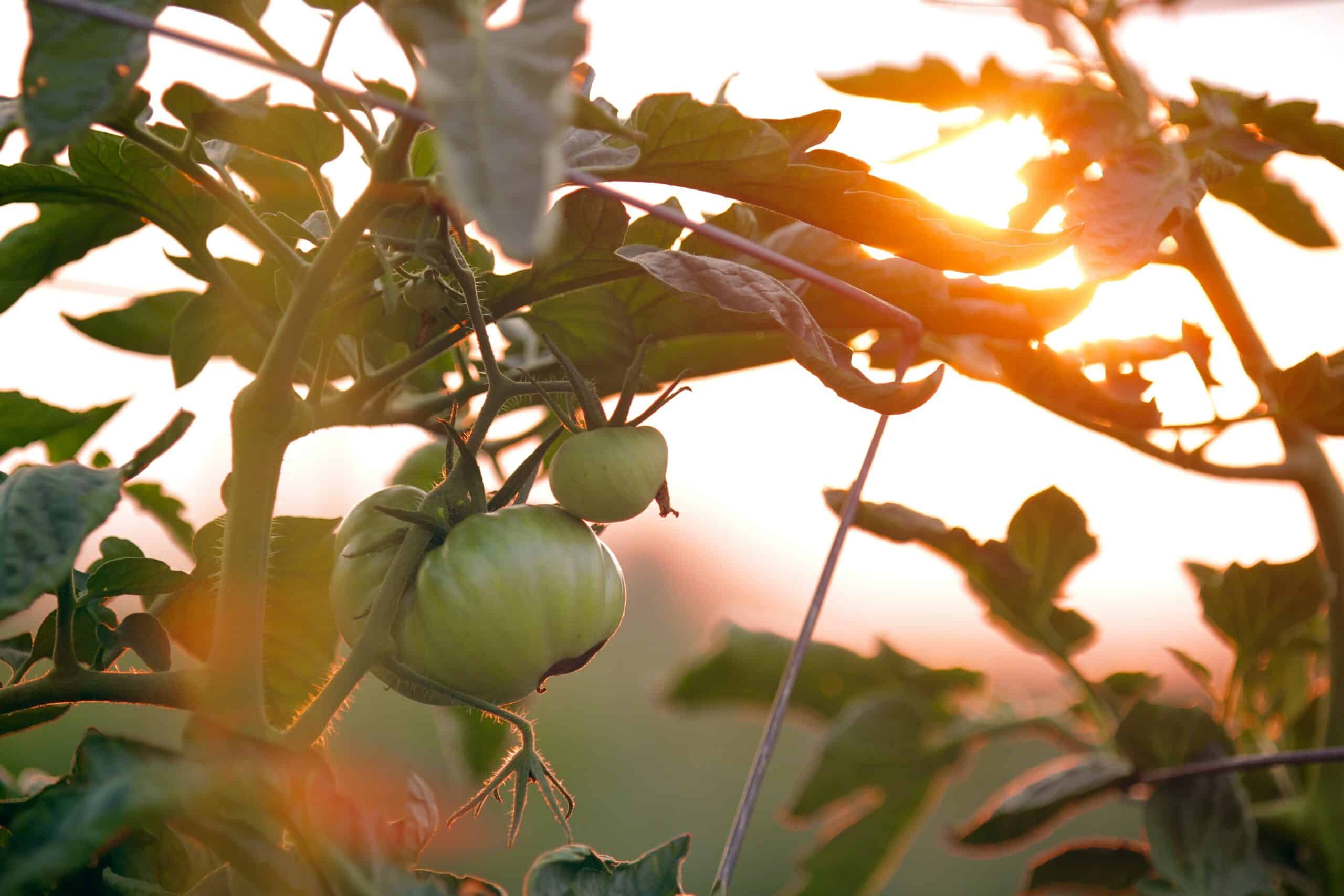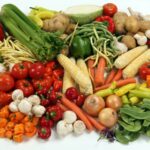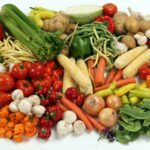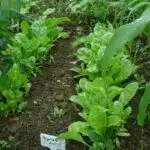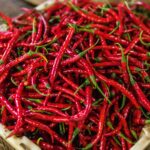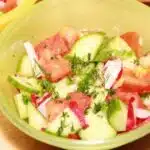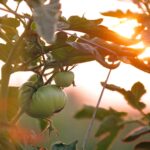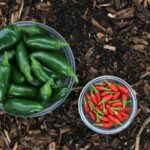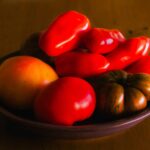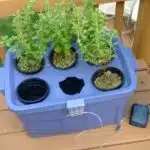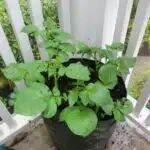Growing your own vegetables in a container garden is like caring for a beloved pet: it requires attention, patience, and love to get the most out of it. But the rewards can be great—a healthy harvest of delicious vegetables that you can enjoy with your friends and family. It’s no wonder why container gardening is becoming increasingly popular! With so many options available, it can be hard to choose which vegetables are best for container gardening. Here’s an overview of 10 of the best vegetables you can grow in containers, so you can make sure your garden has all the right ingredients for success.
Container gardening is a great way to expand your growing space while adding some beauty to your outdoor area. With careful planning and just a few supplies, you can easily create a thriving vegetable garden that produces some delicious results. The key is choosing the right vegetables for container gardening. From greens and herbs to root crops and tomatoes, there’s something for everyone—and each vegetable has its own unique requirements for optimal growth.
Whether you’re just getting started or you’re looking to add more variety to your existing container garden, this list of 10 best vegetables will help you find the perfect fit for your needs. Read on to learn about some of the top contenders and find out what makes them stand out from the rest!
Container Size And Type For Growing Vegetables
When it comes to growing vegetables in containers, the size and type of container is key. If you want to get the most out of your container garden, you’ll need to figure out what type and size of container works best for your particular situation. This will depend on the types of vegetables you plan to grow, as well as how much space you have available.
For small spaces, consider using window boxes or hanging baskets that can be mounted on walls or balconies. These are great for growing smaller plants like herbs, lettuce, and spinach. For larger vegetable varieties like tomatoes, cucumbers, and peppers, larger planters or raised beds will provide more room for roots to spread out. And if you’re looking for a more aesthetically pleasing option, there are even self-watering containers that make gardening easier.
No matter what type of container you choose, make sure it has good drainage so that water doesn’t get trapped underneath the soil. This is essential for healthy plant growth! With the right container and a little bit of TLC, you’ll be able to create a thriving vegetable garden in no time.
Best Container Vegetables For Beginners
When it comes to growing vegetables in containers, many gardeners are often overwhelmed by the thought of what to grow. Fortunately, there are some great container vegetables that even the most inexperienced gardener can tackle. Here we’ll discuss some of the best container vegetables for beginners.
One of the most popular container vegetable choices for novices is tomatoes. Tomatoes are incredibly easy to grow and can be harvested in as little as 40 days from planting. They also tend to do well in a variety of container sizes and types, making them ideal for those just starting out. Another great option is peppers. Peppers come in all sorts of shapes, sizes, and flavors and thrive in containers with plenty of sun exposure and consistently moist soil.
Herbs are also an excellent choice for beginner container gardeners due to their hardiness and non-fussy nature. Most herbs prefer direct sunlight or at least 6 hours a day, so these should be grown on a sunny balcony or windowsill. A few examples include basil, chives, oregano, rosemary, sage, and thyme – all which offer both culinary uses as well as ornamental value! With these delicious options, anyone can create an attractive edible space right outside their door.
Growing vegetables in containers offers numerous benefits – from convenience to saving money on space – that make them attractive options for any gardener. We’ll explore these perks next!
Benefits Of Growing Vegetables In Containers
Growing vegetables in containers is an easy and exciting way to bring your garden closer to home. For beginners, it can be a great way to become familiar with gardening without having to commit to a large outdoor space. But there are even more benefits that come with growing veggies in containers; let’s explore them now!
Container gardening offers many advantages over traditional gardening methods – from being able to move the plants around for better sun exposure and temperature control, to using different soil mixtures for specific crops. It also eliminates the problem of weeds, since the container walls act as barriers against them. Plus, you don’t have to worry about pests or compaction of the soil like you would in an outdoor garden bed.
One other bonus that comes with container gardening is that it requires less maintenance than a conventional garden. You won’t need any tools like trowels or hoes – just basic items such as potting mix, pots, fertilizer and water will get you started. And if you want to make your life even easier, there are self-watering containers that can help keep your plants hydrated when you’re away.
Container gardening allows us all to become amateur farmers right in our own homes! Whether you’re growing herbs for your kitchen window sill or tomatoes for a balcony garden, this method has something for everyone. So why not give it a try and see what tasty treats await?
Choosing Soil For Container Gardening
Soil is the foundation for any successful container garden. It’s essential to choose the right soil for your vegetables to thrive. Think of it like finding the perfect piece of real estate for a house; you want to find the best one with all the necessary features before you start to build.
Choosing soil for container gardening requires more than just grabbing a bag of potting mix from your local gardening store. Consider the type of vegetables you are growing and how they need to be nourished, as well as what kind of drainage is necessary in order to prevent overwatering or root rot. You also need to think about how much organic matter and nutrients are in your soil, and if it contains any ingredients that might harm your plants.
To help find the best soil for your container garden, do some research into what type of ingredients work best with different types of vegetables. Consider using a combination of potting mix, compost, and other soil enhancers such as vermiculite or peat moss. You can also experiment by adding water-absorbing polymers or homemade compost tea to see which works best for you. With a bit of trial and error, you’ll be able to create an ideal environment for growing healthy vegetables in containers!
Best Vegetables To Grow In Containers
What’s the best way to get your daily dose of vitamins and minerals? Grow it in a container garden, of course! That’s right, you can grow healthy, delicious vegetables right in your own backyard. But with so many different veggies to choose from, how do you know which ones are the best for container gardening? Well, let me tell you – the answer is tomatoes!
No, wait…that’s not quite right. Actually, there are plenty of other vegetables that work great in containers too. From cucumbers and peppers to squash and eggplant, there are numerous options available to create a bountiful harvest from your very own mini-garden.
The key is to pick vegetables that thrive when grown in containers. This means selecting varieties that don’t require too much space or soil depth. Cherry tomatoes and small radishes are great examples of this because they can be grown in shallow pots without needing a lot of soil or water. Peppers also work well because they don’t need as much soil depth as their larger counterparts. And if you’re looking for something hearty and easy to care for, consider growing beans or lettuces – both of which can provide an abundance of nutrition with minimal effort!
With all these tasty and nutritious choices at your fingertips, it won’t take long before you have a lovely container garden full of fresh veggies ready to enjoy!
Tomatoes
If you’re looking for the perfect way to add a burst of flavor and color to your container garden, tomatoes are the answer! Nothing compares to the juicy deliciousness of homegrown tomatoes. It’s like the culinary equivalent of a hug from the heavens!
Tomatoes come in a variety of shapes and sizes, so it’s easy to find something that will fit perfectly into your small-space garden. Cherry tomatoes are especially popular because they produce tons of fruits throughout the summer and they’re easy to pick. You can also try larger varieties like beefsteak or Roma tomatoes if you want a more substantial harvest.
Whatever type you decide to grow, make sure you give your tomato plants plenty of sunshine and water them regularly. If you provide them with good soil and ample care, they won’t disappoint – soon enough, you’ll be enjoying bright red tomatoes fresh off the vine!
Peppers
Peppers are super popular for container gardens, and for good reason. In fact, the National Gardening Association reports that peppers are the third most popular vegetable grown in American home gardens. Here are some other reasons to consider growing peppers in containers:
• They come in a variety of shapes, colors, and sizes. • Peppers have a high yield per plant. • Peppers are relatively easy to grow in containers. • They can be used fresh or cooked in various dishes.
Plus, when you grow your own peppers at home, you get to choose the varieties that suit your tastes best! Sweet bell peppers come in green, yellow, orange, red and purple hues; spicy chili peppers range from mild jalapenos to blisteringly hot habaneros; even mini sweet peppers that look like little jewels! Whatever type of pepper you’re looking for—you’re sure to find it if you grow them yourself at home.
When planning your container garden, think about how much space you have available and how much sun exposure the spot gets. Peppers need plenty of sunlight—at least 6 hours a day—to thrive so make sure there’s an area where they’ll get those rays! With careful watering and fertilizing practices as well as proper pruning techniques, you can enjoy bumper crops of flavorful home-grown peppers all season long.
Lettuce And Salad Greens
Lettuce and salad greens are like a breath of fresh air in the world of container gardening. They bring a lightness, delicacy, and vibrancy to any outdoor space. Growing lettuce and salad greens can be a rewarding experience for gardeners of all levels.
First, you’ll want to choose varieties that have been specifically bred for container growing; these will have shorter roots and smaller leaves than those grown in conventional gardens. You should look for varieties that are resistant to disease and pests, since small containers can be more vulnerable to these issues. You may also want to consider whether or not you’d like the lettuce or greens to be “cut-and-come-again” – this means they will continue producing after you harvest some leaves, making it easier to maintain your crop over time.
Once you’ve selected the right variety, it’s important to provide plenty of sun and water while keeping your plants well-ventilated. Containers can become quite warm on sunny days, so make sure they are placed in an area with good airflow but not too much wind which could damage delicate leaves. Fertilizing your plants every few weeks will help promote healthy growth as well.
With the proper care and attention, you should find yourself with a thriving patch of lettuce or salad greens that will provide plenty of delicious harvests throughout the season. And with carrots up next in the container garden lineup, there’s sure to be even more flavorful bounty ahead!
Carrots
It’s easy to think that carrots simply won’t grow in a container garden, but the truth is that they can be quite successful. Carrots are actually one of the best vegetables for containers because their roots don’t require a lot of space and they don’t need to be deep-rooted. Plus, many varieties of carrots can be harvested in as little as two months, meaning you can have fresh produce ready almost right away.
The key to growing carrots in containers is to choose the right type of carrot and provide ample water and fertilizer. There are smaller varieties of carrots such as ‘Paris Market’ or ‘Little Finger’ that do well in containers since they don’t take up a lot of room. Be sure to fertilize regularly with a well-balanced fertilizer and keep the soil moist but not soggy.
When it comes time to harvest your carrots, you’ll want to pick them when they’re small so they stay tender and sweet. The good news is that once you’ve planted them, you’ll have plenty of fresh carrots all season long! With the right care, your container garden can easily become your go-to source for delicious homegrown carrots. And with beans up next on our list, there’s no better time than now to get started!
Beans
Beans are one of the most popular vegetables for container gardening. These small yet mighty plants provide an abundant harvest with a minimum of effort. They come in a variety of sizes and colors, making them a great choice for adding visual interest to your container garden. Plus, beans are easy to maintain and require little attention once they’re in the ground.
Beans can be planted directly in the soil or grown in containers; whichever way you decide to go, they’ll need plenty of water and good drainage. When it comes to selecting varieties, bush beans tend to do better than pole beans when space is limited because they don’t require support and take up less room. Planting several different varieties will also ensure that you have a continuous supply of fresh beans throughout the growing season.
To get the most out of your bean plants, make sure you fertilize them regularly and keep their roots shaded from direct sunlight. With proper care, these hardy little vegetables will reward you with an abundance of delicious beans all summer long!
From there, eggplants can be a great addition to your container garden as well.
Eggplants
Eggplants are the dark horse of container gardens, providing a unique flair that makes them stand out amongst other vegetables. With their deep purple color and oval shape, they add a certain je ne sais quoi to any garden. As a bonus, eggplants are incredibly easy to grow in containers as long as they are planted in a well-draining soil mix and have access to plenty of sunlight.
Eggplants require consistent watering during the growing season and should be harvested when the fruits are glossy and firm. Pruning the plant may also help encourage additional growth and larger fruit size. If you’re looking for an exotic addition to your container garden that’s both visually appealing and delicious, consider eggplants.
Eggplants can be eaten cooked or raw, diced into salads or grilled on skewers, making them extremely versatile in the kitchen. They can also be added to sauces or used as pizza toppings; the possibilities are endless! Whether you’re looking for an eye-catching addition to your garden or simply want something different to make dinner with, eggplants offer an ideal solution.
Moving onto cucumbers – these cool vegetables are known for their refreshing flavor and crunchy texture...
Cucumbers
Cucumbers are the cool, refreshing treat of the container garden. They’re like a breath of fresh air for your home-grown vegetables. Here are three reasons why cucumbers should be part of your container garden:
- Versatility – Cucumbers are incredibly versatile and can grow in all sorts of different containers, from hanging baskets to large planters. Plus, you can grow them vertically if you have limited space!
- High yields – Cucumbers tend to yield high amounts of produce per plant and can easily feed a family.
- Easy to harvest – Cucumbers are also easy to harvest and don’t require any special tools or techniques. Just pluck them off the vine when they’re ready!
With their versatility, high yields and easy harvesting, cucumbers make an excellent choice for growing in a container garden. So if you’re looking for some delicious veggies that will put a smile on everyone’s face, grab some cucumber seeds and get growing! Now it’s time to move onto the next vegetable in your container garden – zucchini!
Zucchini
Vibrant, round orbs of zucchini seem to dance upon the vine, teasing gardeners with their promise of deliciousness. These tasty fruits are an excellent addition to any container garden. Here’s why:
• Zucchinis are easy to grow – they don’t require much care or attention and will thrive in most soil types. • They’ll produce an abundance of fruit in a short amount of time, providing the gardener with a fresh harvest quicker than many other vegetables. • The plant is also space-efficient and will not take up too much room in your container garden, allowing you to grow other vegetables as well. • You can eat them raw or cooked – they’re incredibly versatile and can be added to salads, stir-fries, soups, or even baked goods!
With these benefits combined, it’s no wonder why so many gardeners choose to include zucchini in their container gardens. These veggies bring a bounty of flavor and nutrition that’s sure to make any meal more enjoyable. A few simple steps are all that’s needed for success – so why not give it a try? Your taste buds won’t regret it!
Ready for something new? Radishes offer a unique flavor and crunchy texture that makes them stand out from the rest – let’s take a look at what makes this veggie so special!
Radishes
Radishes are a brilliant addition to any container garden, like a splash of color in a sea of green. Bursting with flavor and nutrition, they’re an ideal choice for adding a bit of pep to your plate. Plus, they’re easy to grow—which makes them great for beginner gardeners!
Radishes are fast-growing plants, usually ready for harvest in about 4 weeks after planting. The best varieties for containers are the smaller types such as Cherry Belle or French Breakfast radish. Plant them in soil that is well-drained and amended with compost or manure to ensure maximum growth potential. Water regularly and once they reach maturity, simply pull them out of the container.
When harvesting radishes, be sure not to leave them too long in the ground as they can become woody and lose their flavor. Enjoy the peppery taste right away by adding them to salads or roasted vegetables dishes. Radishes also make an attractive garnish on top of soups or sandwiches—the perfect way to add some crunch and color!
Onions
Onions may be small, but they pack a big punch when it comes to container gardening. While many other vegetables simply provide flavor and texture to dishes, onions can add depth and complexity that really brings out the flavors of your home-grown produce. Juxtaposed with radishes, which are known for their sharp flavor and crisp texture, onions offer a smooth, mellow taste that makes them a great complement to other veggies in your garden.
When deciding what to plant in your containers, onions are an excellent choice. They’re easy to grow from seed or sets and don’t need much space; you can even get away with planting several layers of them within the same pot. Plus, they rarely require extra attention such as fertilizing or staking – just make sure they have enough water and sun exposure!
Harvesting onions is simple: once the tops begin to turn yellow or brown, you can pull them up! If you want to store them for later use, let them dry in a sunny spot before placing them in a cool, dark location. With proper storage methods they’ll last for months without any problems – perfect for those looking to stock up on homegrown produce all year round!
Onions are an excellent addition to any container garden; their mellow flavor adds complexity while still being easy and quick to grow. Plus, with minimal effort they keep well and provide delicious produce long after harvest season has ended. For these reasons alone, onions should definitely be part of your vegetable list this season!
Frequently Asked Questions
What Type Of Fertilizer Should I Use When Growing Vegetables In Containers?
Did you know that container gardening is becoming increasingly popular? In fact, over a quarter of all households in the United States now have some type of container garden. With the right vegetables, containers can provide a great way to enjoy fresh produce from your own home. But once you decide on what vegetables to grow, another important question arises: what type of fertilizer should I use?
When it comes to fertilizing your container garden, there are a several options available. The most popular option is liquid fertilizer. This type of fertilizer is easy to apply and can be found in many forms, such as fish emulsion or compost tea. Liquid fertilizer helps provide nutrients quickly and efficiently. However, it needs to be applied more often than other types of fertilizer because it washes out more easily with rain or watering.
Organic fertilizers are another popular option for container gardens. This type of fertilizer is slow-release and does not need to be applied as often as liquid fertilizers. Manure and compost are two common organic options that can help your plants reach their maximum potential. They also add beneficial bacteria and fungi into the soil, which can help improve its structure over time.
No matter which type of fertilizer you decide to use in your container garden, make sure you follow the directions carefully so that you don’t end up over-fertilizing your plants or wasting money on a product that isn’t right for them. With careful attention and a few simple steps, you can create an inviting home garden full of delicious vegetables!
How Often Should I Water My Container Garden?
When it comes to caring for a container garden, one of the most important aspects to consider is how often you should water your plants. With some careful planning and good practices, it’s possible to keep your container garden thriving without having to worry about over- or under-watering.
But how do you know how often to water? It can be tricky to figure out because there are so many factors that come into play, from the size of your containers and the type of soil you use, to the climate in which you’re growing and the types of vegetables that are in your garden.
The best advice we can offer is this: pay attention. Check the soil daily, especially during hot summer days when plants in containers tend to dry out quickly. You want your soil moist but not saturated – if it feels dry or crumbly, then it’s time to give your plants a drink. In general, container gardens need watering once or twice a week depending on conditions such as temperature and humidity – but you may find that you need to adjust this schedule based on what works best for your specific needs.
By taking a proactive approach and paying close attention to both your plants and the environment around them, you’ll be able to ensure that they get just enough water so they can thrive all season long!
Are There Any Vegetables That I Should Avoid Growing In Containers?
Growing a container garden can bring a lot of joy, but it’s important to know which vegetables to plant for the best results. There are some veggies that may not be suitable for growing in containers due to their size or specific needs. Understanding what vegetables to avoid is key in creating a successful container garden.
First and foremost, vegetables with long roots, such as carrots and parsnips, don’t do well in containers. The limited root system of the container will not allow these veggies to develop properly, resulting in stunted growth. Additionally, large vining plants like cucumbers and squash require an immense amount of soil and space to grow properly. Here are four other vegetables you might want to avoid:
- Potatoes: These starchy tubers need plenty of depth for their roots to develop correctly.
- Artichokes: Although they look beautiful, artichokes require deep soils that pots cannot provide.
- Tomatoes: Despite popular opinion, tomatoes aren’t good for containers because they require frequent pruning and lots of nutrients from the soil.
- Corn: Like other large vining plants, corn should be avoided when planting in containers as it doesn’t have enough space or nutrients to thrive.
If you’re looking for success when gardening in containers, then stick with smaller veggies like lettuce, radishes and peppers instead! With proper care and maintenance these veggies can reach full maturity without taking up too much space or resources. By being mindful of what type of vegetable will best fit your container garden setup you can ensure that your harvest will be plentiful!
How Do I Know When Vegetables Are Ready To Be Harvested From A Container Garden?
Growing vegetables in containers can be a rewarding experience, especially when you get to reap the rewards of your labour. As any experienced gardener knows, knowing when the vegetables are ready to be harvested is an important part of the process. Fortunately, there are some tell-tale signs that can help you determine when it’s time to pick those veggies!
First off, size and colour are big indicators of readiness. Most vegetables should reach their peak size before they’re ready to be picked and will also start to change colour. For example, tomatoes go from green to red as they ripen while leafy greens like spinach will become darker and more vibrant.
Also keep an eye out for texture changes – squash and cucumbers should feel firm rather than soft when they’re ready for picking. And if you’re growing root vegetables like carrots or potatoes, look for them to poke up through the soil – this means it’s time for a harvest!
Harvesting at just the right time is key for getting delicious produce from your container garden. Keep these tips in mind and you’ll soon be enjoying fresh veggies that are perfect every time!
Is There Anything I Can Do To Prevent Pests In My Container Garden?
A container garden offers a unique opportunity to create a vibrant, flowering oasis within the confines of one’s own home. But with any garden, there is always the question of how to protect it from pests. Symbolically speaking, protecting one’s garden is like building an impenetrable fortress around it – surrounding it with walls that nothing can breach.
There are many steps one can take to help keep their container garden safe from pests, ranging from simple preventative measures to more extensive control systems. For example, regular inspection and removal of any infested plants or weeds is a good way to ensure that potential pests won’t gain a foothold in your garden. Additionally, planting certain varieties of plants near each other can help discourage certain types of insects by making them less attractive to them.
The last line of defense against pests is often chemical intervention – using pesticides or insecticides to kill off any existing pests and deter new ones from entering the garden. However, these should be used as a last resort and only after all other methods have been tried first; they can be toxic not just to the intended targets but also beneficial insects like bees and butterflies that play an important role in pollination and pest control.
By taking these steps into account and staying vigilant against potential threats, anyone with a container garden can rest assured that their little oasis will remain safe and healthy for years to come.
Conclusion
The container garden is a great way to enjoy the bounty of your own backyard. With the right knowledge and tips, you can create a thriving vegetable garden in almost any size space. From picking out the right soil and fertilizer to knowing when to harvest, growing vegetables in containers is a rewarding experience that will bring you fresh produce for years to come.
In conclusion, container gardening is an easy and fun way to grow your own vegetables. All it takes is some planning, preparation, and patience. By selecting the best vegetables for your climate and providing them with adequate fertilization, water, and pest prevention measures, you can enjoy fresh veggies from your very own container garden all season long.
So take a deep breath and dive into the world of container gardening today! With some guidance and effort, you’ll be able to reap the rewards of tasty vegetables in no time at all. Gardening can be an incredibly rewarding experience – one that will leave you feeling nourished both physically and mentally.

